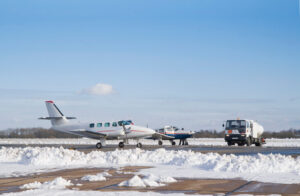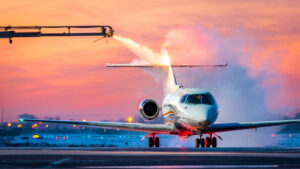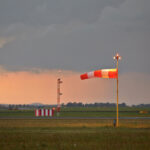What’s In a Cloud?
If your answer to this question was liquid droplets, frozen crystals, or other suspended particles, you would be correct. But if your answer was turbulence, you just might also be right, but then again, maybe not. Yes, clouds can cause turbulence, but there are many different types of clouds, with many different characteristics, so bumps are not always a guarantee when flying through them.
The droplets and crystals in clouds are made of water or various chemicals and are a result of the saturation of the air when it is cooled to its dew point. When the humidity reaches 100%, clouds form and as a result, the density of the cloud is different than the density of the surrounding air. This causes instability and with certain cloud types, the subsequent turbulence.
Cloud Types
According to the World Meteorological Organization, there are almost 100 different types of clouds, but they can be grouped into 10 basic types, depending on their shape and altitude:
Low Altitude Clouds (below 6,500 feet)
- Cumulus
- Stratus
- Stratocumulus
Middle Altitude Clouds (Between 6,500-20,000 feet)
- Altocumulus
- Nimbostratus
- Altostratus
High Altitude Clouds (Above 20,000 feet)
- Cirrus
- Cirrocumulus
- Cirrostratus
Combination Of All Altitudes
- Cumulonimbus clouds can begin low to the ground and top out somewhere above the upper atmosphere.
So Why the Bumps When Flying Through?
Clouds are cooler than the surrounding air and this contrast in density is often enough to create a bumpy ride. But when unstable air starts mixing because of pressure, velocity and temperature changes within the cloud. Compared to the air outside of the cloud, turbulence becomes a real factor.
Now add convection within the clouds, and turbulence can increase exponentially. Because of friction between the molecules and evaporative cooling, updrafts and downdrafts form within both cumulus and cumulonimbus clouds and can cause extreme turbulence. Avoid these types of clouds!
Do All Clouds Create Turbulence?
Clouds that form in stable air with little or no mixing of air masses will not produce turbulence. How will you know what to expect? If the air is extremely stable, look for these signs for a smooth ride:
- Low lapse rates
- Constant temperatures
- Low wind speeds
Knowing how and why clouds cause turbulence will help you plan the smoothest ride for you and your passengers. Remember, seeing clouds on your route of flight doesn’t have to mean you are in for a bumpy ride. But a little caution and a good preflight weather briefing will ensure that you make the safest decisions on the way to your final destination.









